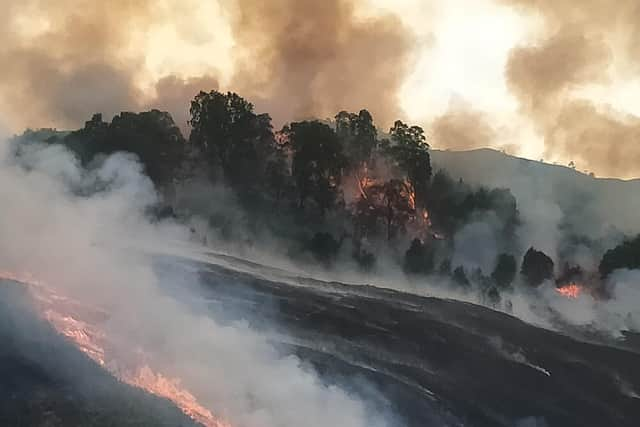Cairngorms National Park: Consultation for potential ban on campfires sees almost 300 replies in first two weeks
A ten-week consultation that could potentially result in a ban on recreational fires in one of Scotland’s national parks has seen almost 300 responses in the first two weeks.
The public is being asked for its views on the possible introduction of restrictions on lighting campfires in the Cairngorms National Park. It comes just a week out from the start of spring, when conditions typically start becoming warmer and drier.
Advertisement
Hide AdAdvertisement
Hide Ad

In March last year, the Scottish Fire and Rescue Service (SFRS) had already put out alerts warning of “very high” and “extreme” risks of wildfires in parts of Scotland.
Wildfire risk is increasing in the country and climate modelling shows a predicted increase in drought periods. A build-up of vegetation, such as grass or heather, becomes “fuel load” and is at risk of going up in flames in dry conditions.
Multiple wildfire incidents over the years, including the wildfire near Cannich in May last year that caused extensive damage to the RSPB's Corrimony nature reserve, have been linked to campfires.
The Cairngorms National Park Authority (CNPA) said the consultation, which it launched this month, will explore the options for minimising the risks of wildfires starting in a bid to reduce the potential threat to people, nature and property in the park.


The three potential options respondents are being asked about are a year-round fire management bylaw to restrict fires with certain exceptions; a bylaw that would ban recreational fires only at times of high fire risk with certain exemptions such as private gardens; or no bylaw, but to instead build on the existing approach of “investing in education and communications to raise awareness of the risks of fires in the national park”.
The consultation opened on February 8, and, in the first two weeks, 261 responses have been submitted.
The public has until April 17 to send in its views. Any potential bylaw is not expected to be introduced until at least 2025 after a further consultation and official go-aheads.
Grant Moir, chief executive at CNPA, said he was “delighted” with the response so far. He said: “Wildfire is something that could have a major impact on the national park.
Advertisement
Hide AdAdvertisement
Hide Ad"The changing climate is increasing risk, and we want to make the right decisions for the long term. In order to do this, it is really important we get feedback from national park residents, land managers and visitors.”
The CNPA said the park was home to 25 of the UK’s rare and endangered species and around half of Scotland’s ancient pinewoods. It is also home to 18,000 people and about two million people visit the area each year. The park covers parts of the Highlands, Aberdeenshire, Moray, Angus and Perthshire.
Deputy Assistant Chief Officer Bruce Farquharson, wildfire lead for SFRS, said: "Wildfires are generally started accidentally. The use of barbecues, lighting campfires or burning rubbish can all accidentally start them. Wildfires cause a lot of damage and can spread very quickly across large areas of land.
"We are working with our partner agencies to raise awareness of the dangers of lighting fires in the countryside. Even small fires that are supervised can become out of control and cause a large amount of damage, especially during periods where the risk of wildfires is high.”
Comments
Want to join the conversation? Please or to comment on this article.